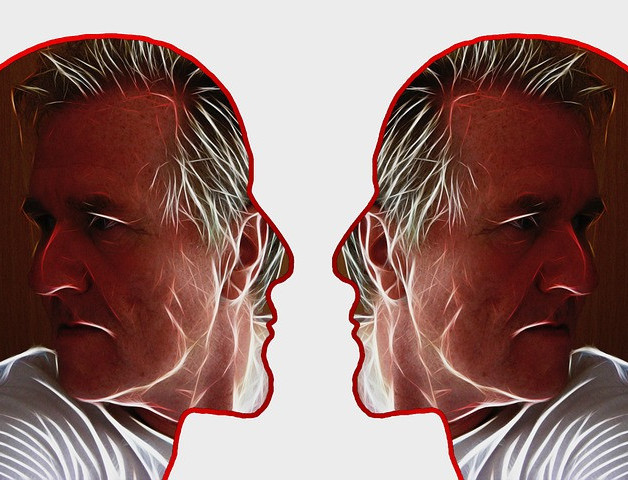Perception, have you ever thought what this word means?
And how does it relate to success?
Four types of perception — the heart, mind, matter, and energetic.
Perception in psychology can be defined as the sensory experience of the world, which includes how an individual recognizes and interpreter sensory information. This also includes how one responds to those stimuli.
Perception includes these senses: vision, touch, sound, smell, taste
How can I improve my perception.
We can improve self-perception by avoiding reliance on rigid rules thinking critically about socializing institutions, intervening in self-fulfilling prophecies, finding supportive interpersonal networks, and becoming aware of cycles of thinking that distort our self-perception.
Why is perception so powerful?
Perception isn’t something we think about often, but it has a huge impact on our emotional state and our behavior. Our perception defines who we believe we are, how we believe our interactions with others should go, and how we believe the world should operate. We view all experiences and conflicts through this lens

Power of Perception Step 1: Notice that you’re triggered
The first step is becoming aware when you fall into an unconscious state. Signs that you are in this unconscious state include:
- Tightening in throat
- Tightening in chest
- Holding your breath
- Experiencing loss of energy
- Inability to focus
- Using defensive humor/sarcasm
- Certainty that you are right and everyone else is wrong
Think of the last time an event really pushed your buttons. How did you feel physically? Did you experience any of these sensations?
Power of Perception Step 2: Change your state from upset to calm
When you recognize these signs, catch yourself. Pause before saying or doing anything. Take a few deep breaths. Remind yourself, “I’m safe. Keep breathing. I can handle this.”
Bring yourself back to a state of composure and consciousness. If you’re conscious enough, you will hear in your inner speech the unconscious beliefs and perceptions behind your trigger.
Recognizing the unconscious programming beneath your upset gives you the opportunity to change your perception from negative to positive.
Power of Perception Step 3: Change your perception from negative to positive
We tend to default to the negative perception that a child is bad, stubborn, disrespectful, or intentionally pushing our buttons.
Instead, we want to use the Power of Perception to consciously offer a perception to others that will be helpful instead of hurtful. This is not “letting them off the hook.”
The goal is to see others in a positive light so we can access the higher centers of our brain, giving us the power of choice and the ability to behave and model in a healthy manner. Without this change in perception, we will model the exact same behaviors we are trying to eliminate in children.
If you’ve made it to Step 3, you’re calm and conscious enough to recognize your negative perception, meaning you have the ability to change it.
Let’s go back to our example of one child hitting another. You now see that your default perception is: “That child is mean.”
In Conscious Discipline, we recognize that all behavior is a form of communication. Ask yourself what the child’s behavior is communicating:
- What need does the child have that is not being met?
- What does the child want?
- What skill is the child missing?
Now, consciously shift your perception. Why did the child hit?
Tell yourself: “The child needs help learning social and emotional skills. He may need to learn how to ask for a turn or how to manage his frustration.”
Power of Perception Step 4: Respond
Now that you’re viewing the situation from a positive perceptual lens, you’ll be able to choose a wise response. Rather than verbally attacking the aggressor, you can teach helpful skills to both children involved in the altercation.
Did the child hit because he wanted a toy? Tell him, “You may not hit. Hitting hurts.” Then teach him to say, “May I have a turn?” instead.
At the same time, you have the opportunity to teach the other child to be assertive. Responding to the victim, you may say, “Did you like it when he hit you? Tell him, ‘When you want to play with my toy, ask me for a turn.’”
If hitting is the only skill a child has, merely telling him not to hit is not helpful. He can’t get rid of this old skill until he has a new, improved skill to replace it. You must be composed enough to teach the child what to teach the child what he should Result: Changed Behavior
I’ve broken the Power of Perception into a four-step process, but it happens in a matter of seconds. Mastering this process takes effort, practice and time. Be kind to yourself as you “Oops” along the way. Stick with it. If you can do this, you can make huge changes in your behavior—and then in the behavior of children.
In Conscious Discipline, we teach children to make permanent behavior changes through a similar process:
- We tell them, “You seem angry,” or, “You seem sad,” to help them recognize their upset state.
- We say and model, “Breathe with me. You can handle this,” to help them change their emotional state from upset to calm.
- We say, “You wanted ________,” or, “You were hoping _________,” to change their perception from negative to positive.
- Finally, we provide them with helpful responses: “When you want ____________, say/do ______________” or “Tell your friend, ‘When you want _________, say/do ___________.’”
We can’t teach children a process that we’re incapable of mastering ourselves. So, commit to consistently practicing this four-step process. As you improve your own skills, it will become second nature to model them and teach them to
Final Thoughts: Power of Perception
If we can change our perception, we can make permanent behavior changes. Then, we can teach children to permanently change their behavior too.
Start by acknowledging that when you are upset, it’s because you feel threatened or the world is not going your way. No one can make you feel anything. Take back your power.
Remember to:
- Notice that you’re triggered. Pause.
- Change your state from upset to calm. (I’m safe. Keep breathing. I can handle this.)
- Change your perception from negative to positive.
- Choose a helpful response instead of a hurtful reaction.
With this process, you can compose yourself when triggered, change the neural pathways in your brain, and cease to pass your guilt and triggers down to the next generation. The Power of Perception is powerful indeed.

